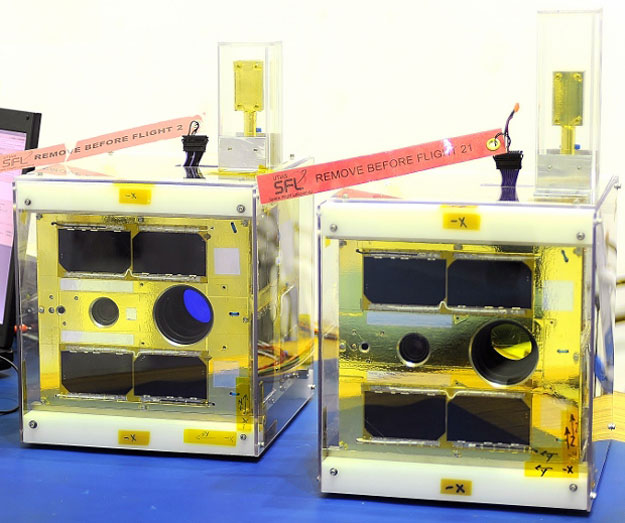On Monday morning at 7:26 a.m. EST an Indian Polar Satellite Launch Vehicle (PSLV) will launch from the Satish Dhawan Space Center in Sriharikota, India with four Canadian built satellites and three other satellites.
The primary payload for the launch is the Indian-French joint venture SARAL (409kg) earth observation small satellite.
The secondary payload includes Canada’s Sapphire, a small satellite (148kg) and NEOSSat, a microsatellite (74kg), UniBRITE (14kg) and BRITE (14kg) which are Canadian built microsatellites for the University of Vienna and Technical University, the Danish AAUSAT3 (3kg) nanosatellite, and the UK’s STRaND-1 (6.5kg), a nanosatellite.

Credit: ISRO.
Sapphire is the Department of National Defence (DND) first dedicated military satellite and will be an integral part of Canada’s space surveillance capabilities.

View of the Sapphire spacecraft taken in a N2 purge controlled environment at the Canadian Space Agency’s David Florida Laboratory in Ottawa. Credit: Sergeant Gatan Racine, Canadian Forces Combat Camera. 2012 DND-MDN Canada.
NEOSSat will be the first space telescope dedicated to the search for near-Earth asteroids. NEOSSat is the result of a university-industry collaboration and will spend half the time looking for these small interplanetary objects that could potentially impact the Earth and cause great damage. NEOSSat will spend the other half of its time searching for satellites and space debris in orbit around the Earth in a research project sponsored by a DND agency, Defence Research and Development Canada (DRDC).

An employee is setting up radio frequency feed horns pointing at NEOSSat in a small anechoic chamber at the David Florida Laboratory located in Ottawa. Credit: Janice Lang, DRDC.
The BRIght Target Explorer (BRITE) microsatellites we’re built by the Space Flight Laboratory (SFL) at the University of Toronto Institute for Aerospace Studies for the University of Vienna and Technical University, Graz, Austria respectively.
According to the SFL the “BRITE constellation will use six satellites, each observing a given stellar target field at different times to measure low frequency brightness oscillations in luminous stars. The satellites will have different optical filters in order to obtain temperature information. These measurements will uncover the characteristics of the stars and help answer questions related to the origin of the universe and creation of heavy elements that formed the planets and life on Earth. The approach is known as asteroseismology – the same approach used by Canada’s first space telescope, MOST (Microvariability and Oscillations of STars), to characterize stars similar to our sun.”
While UniBrite and BRITE are owned by the Austrian universities, the data will be shared among all the researchers taking part in the constellation program including Canada. UniBrite will be operated from the Space Flight Laboratory in Toronto.
The launch of the BRITE satellites as well as the Danish nanosatellite was facilitated by the Nanosatellite Launch Service, the commercial arm of the Space Flight Laboratory.

The Space Flight Laboratory at the University of Toronto Institute for Aerospace Studies built UniBRITE microsatellite is on the left and BRITE microsatellite on the right. Credit: Nanosatellite Launch Service
The launch will be webcast live by the Indian government at this address:
http://webcast.gov.in/live/
 SpaceQ Space news and analysis.
SpaceQ Space news and analysis.



